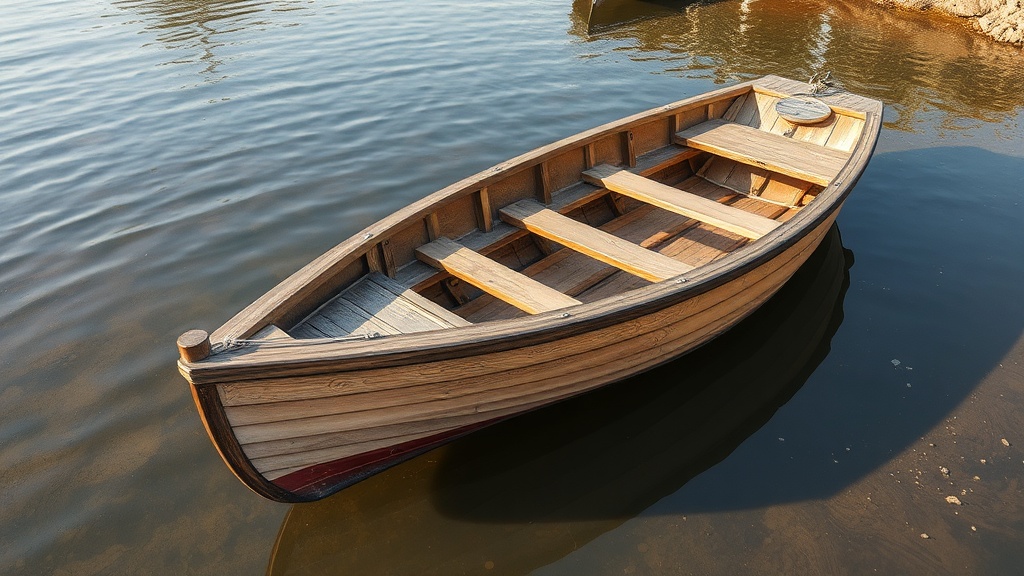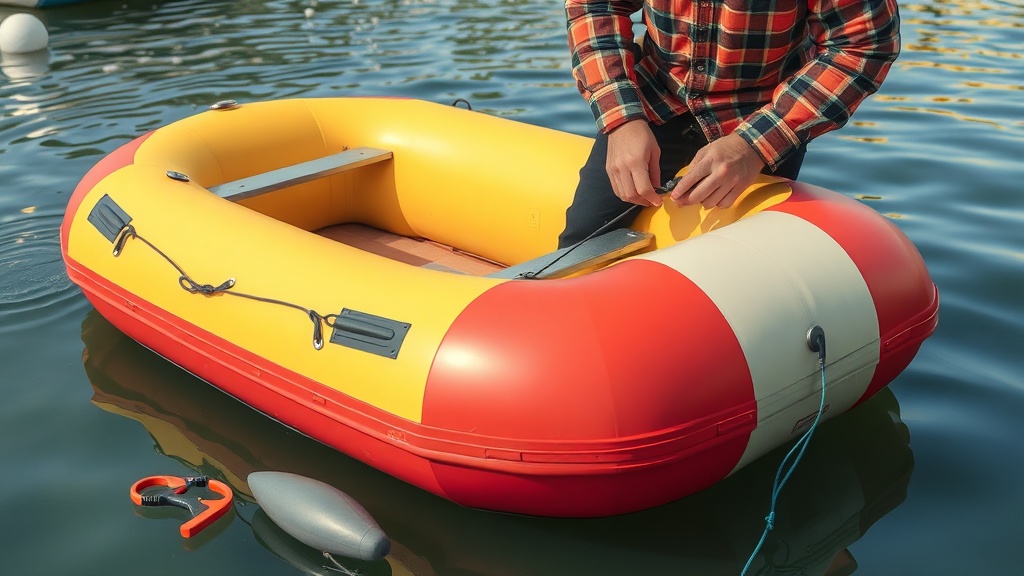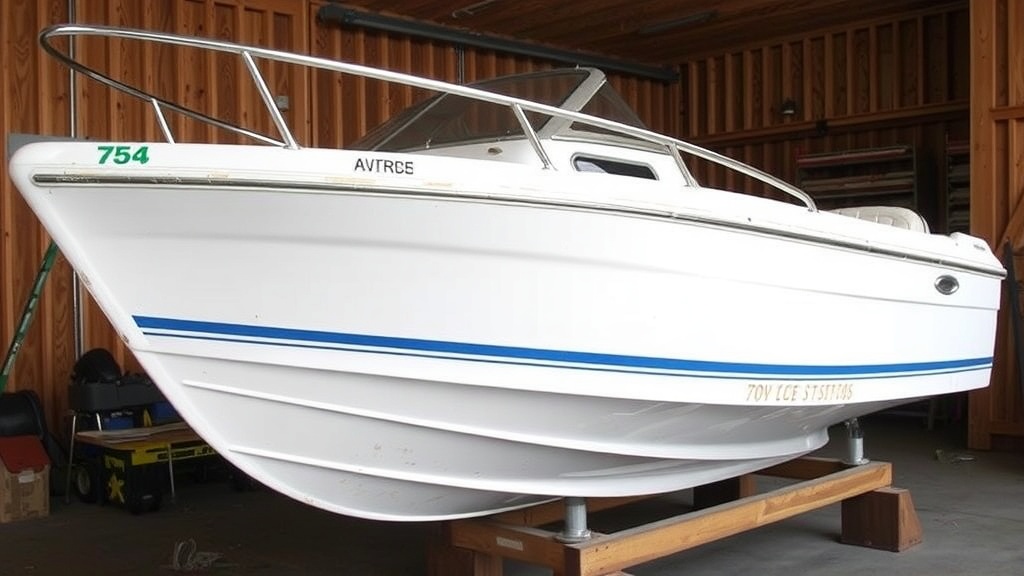Essential Steps on How to Repair a Wooden Boat
Repairing a wooden boat may seem daunting, but by following some essential steps and techniques, you can bring your beloved vessel back to its former glory. Whether it’s addressing minor scratches or dealing with rot, understanding how to repair a wooden boat can save you a lot of money and help preserve its beautiful craftsmanship.
Assess the Damage
The first step in repairing a wooden boat is to conduct a thorough assessment of the damage. Look for signs of wear such as:
- Cuts or scrapes on the hull
- Cracks or splits in the wood
- Soft or spongy spots that indicate rot
- Loose or missing fasteners
Make sure to examine both the interior and exterior of the boat. Once you’ve identified all problem areas, you can prioritize repairs effectively.
Gather Your Tools
Next, gather the necessary tools and materials for your repair project. You will need:
- Sandpaper (varying grits)
- Wood filler or epoxy
- A chisel and mallet
- Varnish or paint
- Brushes or rollers for application
- Protective gear (gloves and goggles)
Having the right tools at hand will make your repair process smoother and more efficient.
Preparation for Repair
Before beginning any repair work, ensure the area is clean and dry. If you’re dealing with rot, you’ll need to remove the affected wood. Use a chisel to carefully remove any rotting sections until you reach solid wood. If it’s a minor scratch or crack, sanding down the area will suffice.
After removing damaged wood, clean the area thoroughly. Dust and debris can interfere with the bonding of wood fillers or epoxies.
Repairing the Damage
For minor scratches or surface damage, simply fill the area with wood filler or epoxy. Ensure the material is level with the surrounding surface. Allow it to cure according to the manufacturer’s instructions.
For more extensive damage, you may need to replace entire planks or sections of wood. Cut new pieces to fit the space, securing them with appropriate fasteners. When possible, use the same type of wood as the original for a seamless appearance.
Sanding and Finishing Touches
After repairs, sand the area to smooth out any rough edges and ensure a uniform surface. Start with coarse sandpaper and gradually move to finer grits for a polished finish.
Once you’ve achieved the desired smoothness, it’s time to apply varnish or paint. This not only enhances aesthetics but also protects the wood from future damage. Make sure to follow the application guidelines for the best results.
Regular Maintenance
To prevent future repairs, regular maintenance is crucial. Here are some practices to maintain the integrity of your wooden boat:
- Inspect your boat regularly for signs of wear or damage.
- Clean the boat after every use to remove dirt and salt.
- Apply a fresh coat of varnish or paint as needed.
- Store the boat away from harsh weather conditions when not in use.
By incorporating these maintenance tips, you can prolong the life of your wooden boat and reduce the need for extensive repairs.
Repairing a wooden boat does not have to be a scary task. With these essential steps, you’ll find that the process is manageable and even rewarding. Each repair makes you more skilled and knowledgeable about your vessel. Managing repairs not only saves you money but also deepens your connection to your beautiful boat. Take the time to care for your wooden boat, and it will serve you well for many adventures to come!
Common Mistakes to Avoid When Restoring Wooden Boats
Restoring a wooden boat is a fulfilling adventure, but it can be fraught with challenges. Many boat owners make common mistakes that can lead to costly setbacks or even ruin their project. To make the most of your restoration experience, steer clear of these pitfalls.
Underestimating the Work Involved
One of the biggest mistakes you can make is not fully understanding the amount of work required. Wooden boat restoration is not a weekend project; it often takes weeks or months, depending on the boat’s condition. Be sure to assess the boat thoroughly before starting. Create a detailed plan that outlines each step of the process, from the initial inspection to the final finishing touches. This will keep you organized and motivated.
Neglecting Essential Safety Precautions
Safety should never take a backseat during any restoration project. Always wear appropriate protective gear, including gloves, goggles, and dust masks. Many restoration tasks involve sanding, painting, or working with powerful tools that can be hazardous. Ensuring your workspace is safe can prevent injuries and accidents that can delay your work.
Skipping the Research Phase
Do not dive into restoration without doing your research. Familiarize yourself with the specific type of wood used in your boat and the techniques best suited for that material. Understanding the history of your particular boat model can also provide insights into maintaining its integrity. There are numerous online forums, books, and videos available that can offer invaluable advice. Knowledge is your best ally.
Ignoring Structural Integrity
When restoring a wooden boat, pay close attention to the structural components. Don’t assume that all the wood is sound simply because it looks fine on the surface. Many boats hide issues like rot or damage beneath layers of paint or varnish. Utilize tools like moisture meters to assess the health of the wood. Addressing structural problems early on can save you significant trouble down the line.
Overlooking Proper Drying Times
If you’re working with epoxy, varnish, or paint, it’s vital to stick to recommended drying times. Rushing through the process can lead to poor adhesion, resulting in a less durable finish. Too much humidity can also affect drying times, so keep an eye on the weather conditions while you work. Opt for ideal conditions to ensure the best results.
Using Low-Quality Materials
When it comes to restoration, cutting corners with cheap materials is a mistake you’ll want to avoid. Quality wood sealants, paints, and fasteners can make a huge difference in the longevity of your restoration work. Invest in high-grade materials that offer better protection and performance. In the long run, this investment can save you from future repairs.
Neglecting to Maintain Original Features
One of the joys of restoring a wooden boat is the opportunity to preserve its unique character. Avoid changes that alter the boat’s original features unless absolutely necessary. Retain elements such as original wood fittings and hardware, which contribute to the vessel’s charm and authenticity. Authenticity is crucial to maintaining the boat’s value and appeal.
Failing to Document Your Work
Keeping a thorough record of your restoration is beneficial for several reasons. It allows you to track progress, troubleshoot issues, and can be useful for potential buyers if you decide to sell the boat in the future. Take before-and-after photos, note any significant changes made, and keep receipts for materials, so you have a complete history of your project.
Ignoring Regular Maintenance After Restoration
After putting in all the hard work to restore your wooden boat, don’t forget that maintenance is key to keeping it in excellent condition. Develop a regular maintenance schedule that includes cleaning, checking for signs of wear, and applying new protective finishes as needed. A little attention consistently will go a long way in preserving your restored vessel.
By avoiding these common mistakes, you can make your wooden boat restoration enjoyable and triumphant. Take each step carefully, remain patient, and enjoy the journey of breathing new life into your cherished boat.
Conclusion
Successfully repairing and restoring a wooden boat can be a fulfilling project that enhances your enjoyment on the water. By following the essential steps, you can ensure your boat remains in top shape for years to come. Start with a thorough assessment of your boat’s condition, addressing any structural or cosmetic damage first. Employing proper techniques, selecting the right materials, and utilizing tools suited for wooden boats will significantly improve the quality of your repair work.
Even seasoned boaters can make mistakes during restoration projects. It’s important to take your time, plan your repairs meticulously, and avoid cutting corners. Rushing through the process can lead to future issues, so focus on delivering quality craftsmanship. Additionally, remember to maintain proper ventilation and safety measures, as working with wood and adhesives can sometimes involve hazardous materials.
Ultimately, your dedication to following best practices in repairing a wooden boat will lead to not only a functional vessel but also a beautiful one. Patience, attention to detail, and an eagerness to learn will carry you through challenges. Embrace the journey, and let it deepen your connection to your boat and the water. With careful restoration and preventive maintenance, you can enjoy many more adventures on the water for years to come. Whether you are a novice or an experienced boat enthusiast, the joy of sailing a well-maintained wooden boat is a reward in itself.




